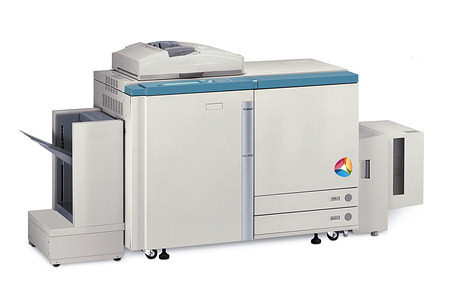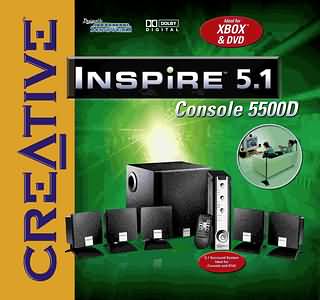 |
||
|
||
| ||
Color Canon CLC 3900 print system Inspire 5.1 Console 5500D and Inspire 2.1 Console 2400: game console acoustics from Creative IDF Fall 2002: final AGP 3.0 specifications New DesignJet 5500 wide-format printers from Hewlett-Packard IDF Fall 2002: Intel, Microsoft, Sony form an alliance to promote home network technologies IDF Fall 2002: live from San Jose, continued IDF Fall 2002: live from Intel Banias press conference, San Jose While Intel conducts its developers forum in San Jose, AMD has announced its next-generation logics and flash memory production partner. The company has chosen Lam Research with its Lam 2300 process technology. Dielectric Lam 2300 Exelan film and 2300 Versys markup system will be used in the current AMD developments as well, as it´s suitable for 200-mm and 300-mm wafers. Currently Lam tools are being installed at AMD Submicron Development Center (SDC), providing technologies for all company fabs. According to AMD, first, Lam process technologies will be used for HARC contact (high-aspect-ratio contact) production and in low-k processes.
Color Canon CLC 3900 print system North American Canon reported the release and sales of CLC 3900 color reproducing system. It provides 39 page/min rate and designed for the market of basic level reproducing system. CLC 3900 was presented at Seybold exhibition-conference in San Francisco. It utilizes Canon FB (Finer Brighter) toner provides up to 800È400 dpi. The recommended monthly printing quota of CLC 3900 is 150,000 copies. Maximum paper size is 300x460 mm, total capacity of four paper trays is up to 5350 á4 pages. The system itself costs $54990, but it can be equipped with optional specialized ColorPASS-Z4500 server for using as a high-performance network printer. ColorPASS-Z4500 bases on 1 GHz Intel Pentium III, has 60GB hard disk and 256MB SDRAM. It costs $36500 and is shipped with installed Command Workstation, ColorWise 2, PowerForm and optional DocBuilder Pro software.
Inspire 5.1 Console 5500D and Inspire 2.1 Console 2400: game console acoustics from Creative Creative announced Creative Inspire 5.1 Console 5500D and Creative Inspire 2.1 Console 2400 acoustic systems.New Creative products are designed for using with game consoles. Creative Inspire 5.1 Console 5500D, fully supporting Dolby Digital in games and movies on Xbox or PlayStation2, features 5 satellites and an active subwoofer. It has a separate Dolby Digital encoder with wide connectivity features, enabling to use it in games and in home audio and video systems. A wireless remote adds more user comfort.
 Creative Inspire 2.1 Console 2400 features variants for Xbox, PlayStation2 and GameCube. This tricomponent system includes a strengthened wood subwoofer and two specially constructed satellites. The provisional retail price of Creative Inspire 5.1 Console 5500D is $155. Creative Inspire 2.1 Console 2400 will cost about $36.
IDF Fall 2002: final AGP 3.0 specifications Intel announced the final specifications of AGP 3.0. It technically defines AGP 8x solution, the direct successor of AGP 4x, and is the intellectual property of Intel, licensed free of charge.AGP8x doubles data transfer rate comparing to AGP4x, being backward compatible with the latter. It has been developed by joint efforts of Intel, ATI, NVIDIA, Matrox and 3Dlabs. In Q4 2002 Intel is to announce two new chipsets, codenamed Placer and Granite Bay, intended for high- and low-end workstations. The similar mainstream desktop solution is to appear next fall. AGP8x will become the last parallel interface, meeting the requirements of computer industry, before the transition to PCI Express solutions in 2004. The final version of AGP 3.0 specifications is at developer.intel.com/technology/agp
New DesignJet 5500 wide-format printers from Hewlett-Packard Hewlett-Packard released a serie of new wide-format HP DesignJet 5500 printers to be shipped in October.HP DesignJet 5500 supports hp JetExpress technology, features 6 print heads with 512 nozzles and provides up to 21 mm per second print speed. New devices support special ink feed algorithm to increase quality without reducing speed. Printers can be controlled through a built-in web browser and WebAccess software, supporting TIFF / JPEG / PostScript / PDF.
 Printers support max. 1200x600 dpi resolution, and print a sheet of A0 coated paper for 1 min. 51 sec (max. speed), á0 Glossy Photo Paper for 12 min. 15 sec (max. quality). The dimensions of the model, supporting up to 1067 mm wide paper, are 1975x675x1280 mm, weight — 100 kg. The model, supporting up to 1524 wide paper, has 2433x675x1280 dimensions and weighs 120 kg. A standard HP DesignJet 5500, supporting up to 1067 mm width (B0) costs about $9900, B0 model supporting UV printing costs about $10800, B0 model supporting PostScript3 — about $14000, B0 models supporting PostScript 3 and UV inks — $15000. A standard HP DesignJet 5500 supporting up to 1524 mm wide paper costs about $16650, supporting UV inks — $17500, supporting PostScript 3 — $20800, supporting PostScript 3 and UV inks — $21650.
IDF Fall 2002: Intel, Microsoft, Sony form an alliance to promote home network technologies At Intel Developer Forum (IDF) in San Jose, CA, Intel announced plans to join efforts with Microsoft and Sony to promote new home network technologies.Together Intel, Microsoft and Sony are developing the Digital Home Network concept. It implies connecting such devices as PCs, TVs, monitors, etc. into a single network, based on 802.11 and other technologies. One of the first steps on the way to the Digital Home Network is the Extended Wireless PC concept. Such a device will be similar to a hub, providing data and file exchange to a home wireless network. Microsoft, from its part, is developing software for such networks, and has already announced BioMedia technology for controlling home wireless network dataflow.
IDF Fall 2002: live from San Jose, continued IDF brought the announcement of Wireless MMX.Essentially, Wireless MMX resembles MMX, but features some extensions and changes. Of course, these two are not compatible. However, the new technology supports SSE2 integer part as well, that requires some source code changes. An interesting analogy: our reporter, Alexandr Medvedev says that Wireless MMX is very close to vector macros of Itanium processors. :-) Wireless MMX was developed for future ARM-based products. Current XScale PXA250 and 210 do not support it, but in about 9 month there will be new generation of chips, supporting Wireless MMX. Also remember that Intel is the only company that hasn´t licensed the ready core from ARM, but only instruction set, and have made its own processor core to implement its extended version. So, Wireless MMX offers 43 instructions, similar to MMX and to SSE2 integer part. Alexandr has spoken with one of Wireles MMX developers, who narrated the further company plans. Very interesting: in about two generations the developers are going to add floating point extension, similar to SS2, to XScale Wireles MMX. Another interesting announcement: there was new PCA (XScale) technology announced, enabling to run programs directly from flash memory! As you know, previously programs were copied to RAM, that took precious time. Now there´s a possibility to execute them directly from flash without any latencies. Intel not only plans to use this technology in its developments (XScale), but also to license it to all willing, as any flash will do. And now — the day´s highlight. It has been announced that XScale-based products controlled by PalmOS 5 will appear in the market soon!!! Palm has already certified its OS from Intel. Though, XScale products under PalmOS 5 wil be produced not by Palm, but by other makers.
IDF Fall 2002: live from Intel Banias press conference, San Jose Just some hours ago our reporter, Alexandr Medvedev, was at Intel Developer Forum in San Jose, CA. And we present you the currently latest information about Banias processor, undisclosed at the press conference:
Some other interesting things from IDF:
Write a comment below. No registration needed!
|
Platform · Video · Multimedia · Mobile · Other || About us & Privacy policy · Twitter · Facebook Copyright © Byrds Research & Publishing, Ltd., 1997–2011. All rights reserved. |